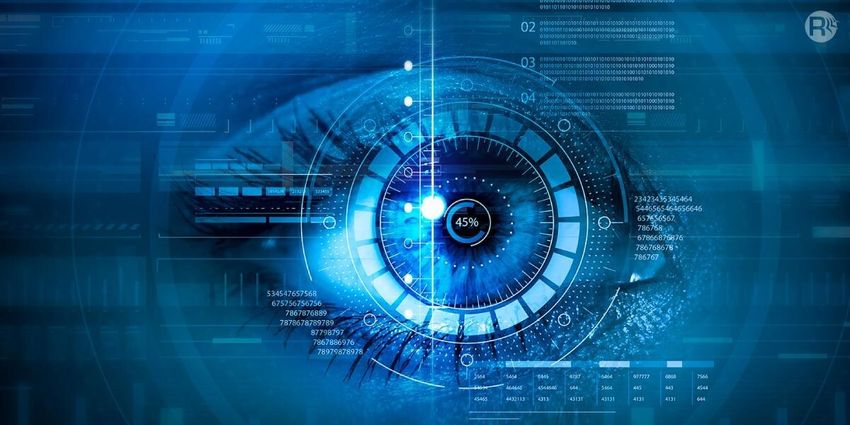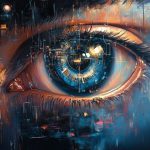Computer vision is a rapidly evolving field of artificial intelligence (AI) that enables computers to interpret and process visual information from the world, similar to how humans see and analyze images. With Python’s robust ecosystem of libraries and frameworks, it has become easier for developers to build computer vision applications for diverse domains such as healthcare, automotive, entertainment, and more.
In this article, we’ll explore what computer vision is, how Python supports it, and step-by-step instructions to get started with building computer vision applications.
What is Computer Vision?
Computer vision involves the development of algorithms and techniques that enable machines to gain a high-level understanding of visual data, such as images or videos. Some common tasks in computer vision include:
- Image Classification: Identifying objects in an image.
- Object Detection: Locating objects in an image or video.
- Image Segmentation: Dividing an image into meaningful regions.
- Facial Recognition: Identifying and verifying human faces.
- Optical Character Recognition (OCR): Extracting text from images.
These tasks are powered by machine learning and deep learning techniques, particularly convolutional neural networks (CNNs).
Why Use Python for Computer Vision?
Python has become the go-to programming language for computer vision due to its simplicity, extensive libraries, and strong community support. Some popular libraries for computer vision in Python include:
- OpenCV: A powerful library for real-time image and video processing.
- Pillow (PIL): For basic image processing tasks.
- Scikit-image: Built on top of NumPy, it provides tools for advanced image processing.
- TensorFlow/Keras: For building deep learning models for computer vision tasks.
- PyTorch: Another popular deep learning library used for research and production.
- dlib: A toolkit for facial recognition and object detection.
Setting Up Your Python Environment
To start with computer vision in Python, install the required libraries. You can use pip to install these dependencies:
pip install opencv-python opencv-python-headless numpy matplotlib pillow tensorflow
(Optional) Install PyTorch if you’re using it:
pip install torch torchvision
Basic Computer Vision Tasks with Python
1. Reading and Displaying an Image
Using OpenCV, you can read and display images with just a few lines of code:
import cv2
# Read an image
image = cv2.imread('example.jpg')
# Display the image
cv2.imshow('Image', image)
cv2.waitKey(0)
cv2.destroyAllWindows()
2. Converting an Image to Grayscale
Converting an image to grayscale simplifies processing and is often the first step in many computer vision tasks.
gray_image = cv2.cvtColor(image, cv2.COLOR_BGR2GRAY)
cv2.imshow('Grayscale Image', gray_image)
cv2.waitKey(0)
cv2.destroyAllWindows()
3. Performing Edge Detection
Edge detection highlights the boundaries of objects within an image. OpenCV provides the Canny Edge Detection algorithm.
edges = cv2.Canny(gray_image, 100, 200)
cv2.imshow('Edges', edges)
cv2.waitKey(0)
cv2.destroyAllWindows()
4. Face Detection Using Haar Cascades
OpenCV includes pre-trained Haar cascade models for face detection.
# Load the Haar cascade for face detection
face_cascade = cv2.CascadeClassifier(cv2.data.haarcascades + 'haarcascade_frontalface_default.xml')
# Detect faces in the grayscale image
faces = face_cascade.detectMultiScale(gray_image, scaleFactor=1.1, minNeighbors=5, minSize=(30, 30))
# Draw rectangles around detected faces
for (x, y, w, h) in faces:
cv2.rectangle(image, (x, y), (x+w, y+h), (255, 0, 0), 2)
cv2.imshow('Detected Faces', image)
cv2.waitKey(0)
cv2.destroyAllWindows()
Deep Learning for Computer Vision
Deep learning, particularly CNNs, powers most state-of-the-art computer vision applications. Here’s an example using TensorFlow to classify an image.
Image Classification with a Pre-trained Model
Using a pre-trained model like MobileNetV2 from TensorFlow’s Keras API allows you to classify images quickly.
import tensorflow as tf
from tensorflow.keras.applications.mobilenet_v2 import MobileNetV2, preprocess_input, decode_predictions
from tensorflow.keras.preprocessing import image
import numpy as np
# Load the pre-trained MobileNetV2 model
model = MobileNetV2(weights='imagenet')
# Load and preprocess the image
img_path = 'example.jpg'
img = image.load_img(img_path, target_size=(224, 224))
img_array = image.img_to_array(img)
img_array = np.expand_dims(img_array, axis=0)
img_array = preprocess_input(img_array)
# Predict the image class
predictions = model.predict(img_array)
decoded_predictions = decode_predictions(predictions, top=3)
# Print the top predictions
for i, (imagenet_id, label, score) in enumerate(decoded_predictions[0]):
print(f"{i+1}. {label}: {score:.2f}")
Real-World Applications of Computer Vision
- Healthcare:
- Analyzing medical images (e.g., X-rays, MRIs).
- Detecting diseases like cancer or pneumonia.
- Autonomous Vehicles:
- Lane detection and traffic sign recognition.
- Pedestrian and obstacle detection.
- Retail:
- Customer behavior analysis.
- Automated checkout systems.
- Entertainment:
- Facial filters and augmented reality (AR) applications.
- Video editing and content generation.
- Security:
- Surveillance and anomaly detection.
- Facial recognition for authentication.
Challenges in Computer Vision
Despite its advancements, computer vision faces several challenges:
- Data Dependency: Requires large and diverse datasets for training.
- Computational Cost: High performance often requires GPUs or specialized hardware.
- Accuracy in Complex Scenarios: Tasks like object detection in crowded or low-light environments remain challenging.
Conclusion
Computer vision is an exciting and impactful field with applications across numerous industries. Python, with its extensive libraries and community support, makes it easy to start building computer vision applications. By mastering tools like OpenCV, TensorFlow, and PyTorch, you can unlock the potential of AI-powered visual systems and bring innovative ideas to life.


